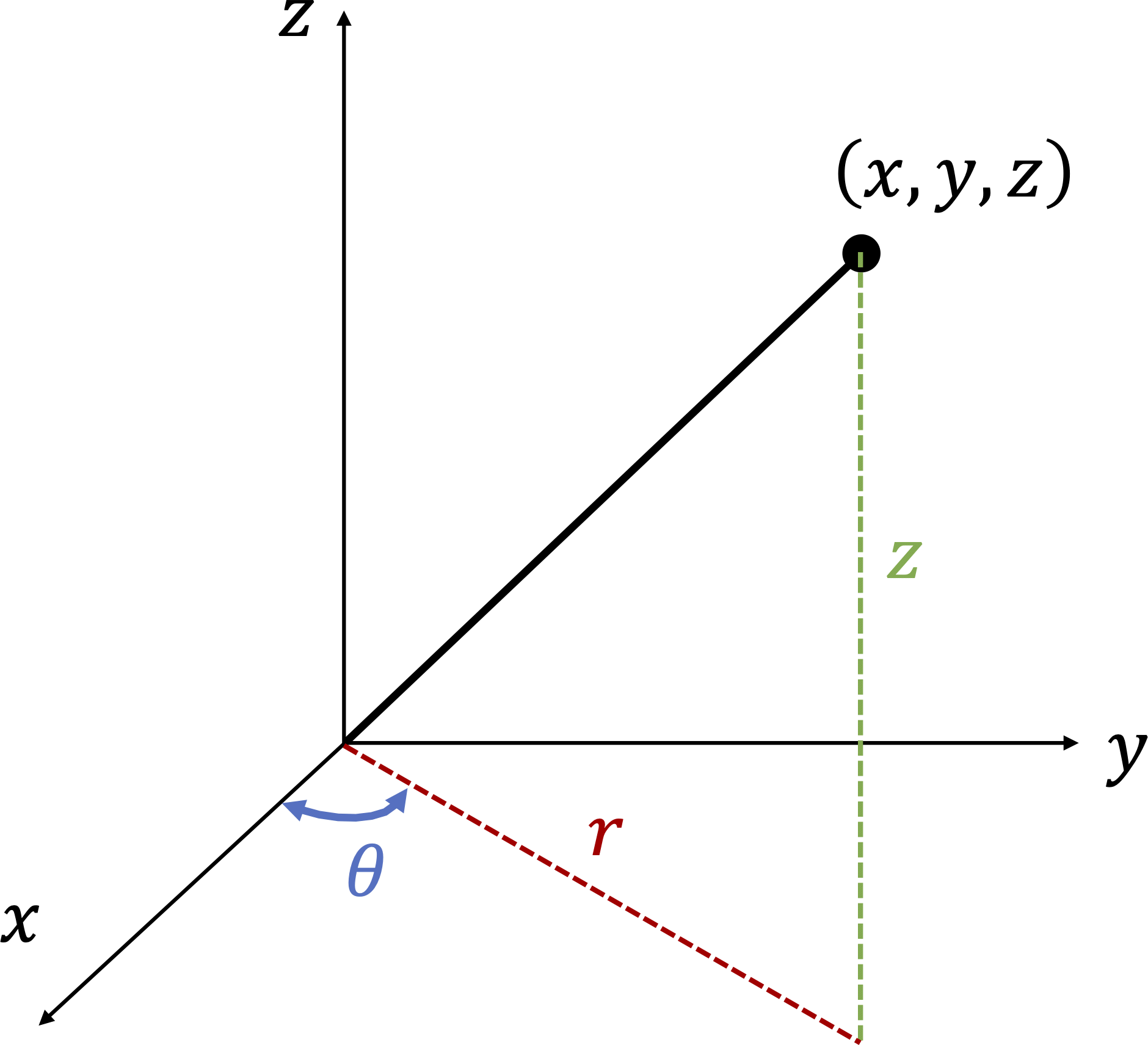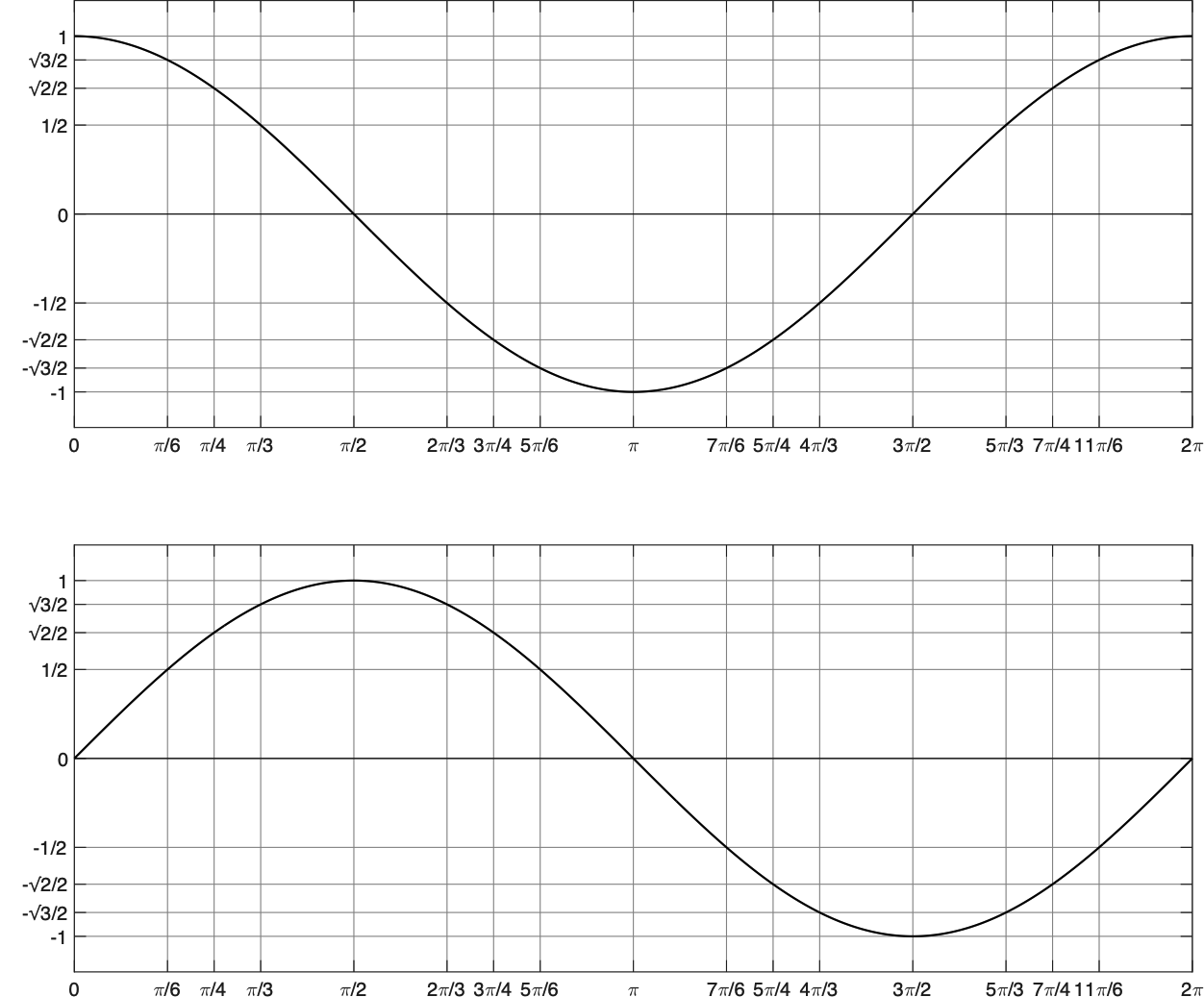Section 2.3 Cylindrical Coordinates

Cylindrical \(\left(r, \theta , z \right)\) and rectangular \(\left(x,y,z\right)\) coordinates are related to each other by the following relations.
-
From cartesian to cylindrical.\begin{equation*} r = \sqrt{x^2 + y^2}, \hspace{0.5cm} \text{ and } \hspace{0.5cm} \theta = \left\{\begin{array}{ll} \tan^{-1}\displaystyle\frac{y}{x} \amp \text{ if } x \gt 0 \text{ and } y \ge 0\\ \pi + \tan^{-1}\displaystyle\frac{y}{x} \amp \text{ if } x \lt 0\\ 2 \pi + \tan^{-1}\displaystyle\frac{y}{x} \amp \text{ if } x \gt 0 \text{ and } y \lt 0\\ \end{array} \right., \hspace{0.5cm} \text{ and } \hspace{0.5cm} z = z. \end{equation*}The conditions on \(\theta\) is to ensure \(0 \le \theta \le 2 \pi\text{.}\)\(~\)
-
From cylindrical to cartesian.\begin{equation*} x = r \cos \theta, \hspace{0.5cm} y = r \sin \theta, \hspace{0.5cm} \text{ and } \hspace{0.5cm} z=z. \end{equation*}
\(~\)



